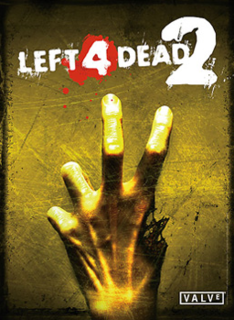INTRO:
As with any Valve franchise which started off with a seminal game, there would be a sequel, which would be much improved and expanded over the original. Furthermore, it would also mean that there is no longer much value to be expected from one’s purchase of the original.
Yet, with Valve’s seeming inability to introduce the third entry to any franchise or sub-franchise (e.g. Half-Life: Episodes), this also means that the sequel is of great value because it would be worked on for years.
Anyway, back in 2008, Valve’s game designers revived the zombie fad yet again, this time with a premise which is similar to that in the film 24 Hours Later. The game which started this fad was Left 4 Dead, and it was a surprisingly entertaining co-op first-person-shooter/stalker which let players play on both sides of the metaphorical fence in the zombie/pandemic apocalypse.
It was followed by Left 4 Dead 2, a more sophisticated sequel and one which would offer more value than the first game itself.
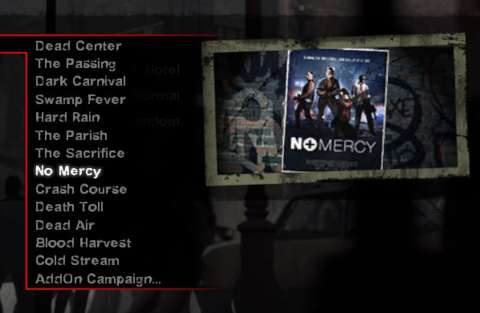
(Note: this review will refer to the Infected as “zombies” and “infected”; consider both terms to be interchangeable in the context of the Left 4 Dead series.)
PREMISE:
As shown already in the first game, an apocalyptic epidemic has occurred across the USA, and possibly the world too. Whom the plague did not kill, it turned into raging feral beasts, or worse.
There are only a handful of survivors, some of whom are now suspected to be both immune to the plague but also spreading it to others as well. The player takes on the role of four of these survivors, in addition to the four (Zoey, Francis, Louis and Bill) in the first game.
Ellis, Nick, Coach and Rochelle are these four additional survivors, and they are the stars of the campaigns/episodes which are introduced in Left 4 Dead 2. After the campaigns from the first game were incorporated in the sequel too, the player gets to play as the first four survivors as well. (This also means that the first game no longer has any value in telling the backstory of the Left 4 Dead franchise.)
The survivors are trying to reach safety by pushing through dangerous situations or regions. However, far from being hapless refugees on the run, the survivors are hardened individuals. Each of them is surprisingly proficient in making use of firearms and even some unconventional means of dealing with the hordes of zombies/infected.
Furthermore, what remains of society seems to have adapted quite well, stocking up weapons and shoring up places into so-called safehouses. However, the infected have also adapted, becoming rather unpredictable and particularly vicious. Moreover, it becomes increasingly clear that the survivors would be the only ones which the plague will not claim.
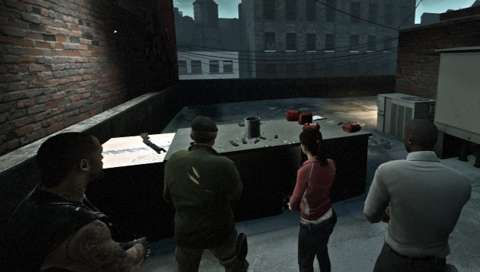
GAMEPLAY IN GENERAL:
As the premise suggests already, the player can take on the role of the survivors, trying to get from one place to another while fending off hordes of zombies and their special variants. In the multiplayer mode which is “Versus” and its variants, the player can take control of one of the “Special Infected” and try to kill the survivors, or stall them as long as possible for other Infected to eliminate them.
The survivors are armed with guns and melee weapons. Guns let them shoot down zombies from afar, obviously, whereas melee weapons one-hit just about any zombie and are more reliable when the survivors are mobbed – which happen more often than one would think.
Outside of the “Realism” modes, the survivors are tough; it takes a lot to take them down. Yet, they can be taken down, due to the sheer volume of zombies which the game will throw at them. They must cooperate in order to minimize the attrition damage, while making pushes towards the next safe-point or survive through defensive scenarios.
As for the zombies, they are practically unending. It may look like the survivors have cleared an area of zombies, but at any time, the game may decide to throw a horde at them, with the zombies appearing from places which the survivors cannot reach.
DIFFICULTY SETTINGS:
Only the cooperative modes have difficulty settings. These settings do the typical: they alter the amount of health which zombies have and how much damage they mete out. In addition, they also influence the decision-making scripts of the game, known colloquially as the “Director”.
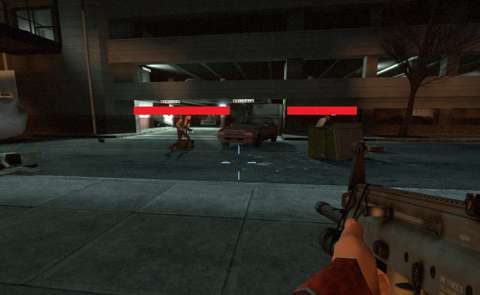
SURVIVOR HEALTH:
As mentioned already, it takes a lot to take down a survivor; the game may try to appear like a B-grade zombie movie at times, but the humans are nothing like the oft-disposable characters in those films.
Even at the highest difficulty settings and the “Realism” option, a survivor has to take several hits from zombies before going down. At the default “Normal”, they can take dozens. However, if the player is not careful in preventing his/her survivor from being mobbed, these hits come rather rapidly.
Unlike many other shooters, a survivor’s state of health does affect his/her performance, specifically at moving about. They are still very much capable of shooting, however, so players who are playing as special infected in Versus mode will want to keep this in mind.
To help players who are playing as survivors keep track of their characters’ state, their health bars are coloured in order to depict that. For example, once their bars turn orange or red, it is time for the players to start worrying, because the survivors’ movement speeds decrease noticeably.
If a survivor loses all of his/her health, he/she is considered downed. He/She can be rescued, but he/she cannot be downed and then revived over and over. There is a very strict limit to this convenience. (There are also other ways to bring down a survivor, as will be described later.)
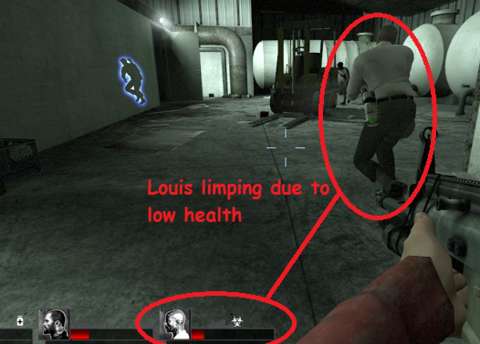
TEMPORARY HEALTH:
There are two variants of health: temporary and non-temporary health. Non-temporary health is what survivors start with; it can only be removed by inflicting damage on the survivors.
Temporary health is usually provided by secondary healing items, or the “second wind” which survivors get after they have been downed and then revived. However, temporary health diminishes over time, regardless of whether the survivor has been attacked or not.
Temporary health is what survivors have after they have been downed and then helped back up by another survivor. They also slow down significantly, and the effectiveness of painkiller pills is diminished when they are in this state.
FIRST-AID KITS:
Short of respawning, healing via first-aid kits is the only way to regain non-temporary health. First-aid kits are often found at safehouses, but rarely anywhere else, unless the “Director” has the whim to make them a bit more common. (There will be more elaboration on the Director later, after the fundamental gameplay elements have been described.)
Therefore, the survivors must manage their consumption of first-aid kits carefully. Otherwise, the attrition damage inflicted by the zombies will eventually take their toll.
The survivors must also keep in mind how much a first-aid kit can heal. It heals more if a survivor is severely wounded, and less if the survivor is less damaged. In fact, a first-aid kit heals a significant percentage of damage to non-temporary health which a survivor has suffered, and not a percentage of the survivor’s total health. Consequently, first-aid kits can never fully heal a survivor.
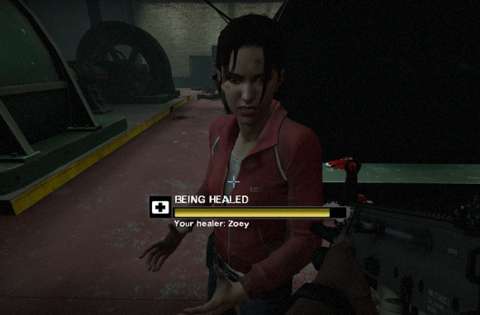
It is worth noting here that the use of first-aid kits resets the count of how many times a survivor has been downed.
These lessons can seem a bit difficult to learn for a player who is used to more straightforward healing items. However, being observant would help a player learn about this.
DEFIBRILATOR:
As mentioned already, the survivors are tough – so tough, that death is not always the end for them. Rather, when they go down for the count, they still have a chance at being revived, if another survivor has a portable defibrillator kit to use on them.
The process is a bit faster than using a first-aid kit, but it is still more dangerous anyway, mainly because the freshly-dead survivor is incapable of helping whoever is helping him/her by shooting at zombies.
Wise players would still pick a first-aid kit over a defibrillator if given the choice, but when there are not many first-aid kits to go around, having one can be incredibly helpful when a survivor does actually die. For example, reviving a survivor which has been killed in a Versus session can be very satisfying, because this denied the Special Infected the metaphorical fruit of their murderous work.
ADRENALINE SYRINGES:
Left 4 Dead 2’s game designers have not passed up on a chance to include a Hollywood movie trope. This trope concerns the use of dubious combat drugs or emergency medicine for a pick-me-up in life-and-death situations. Anyway, this trope takes on the form of adrenaline syringes in Left 4 Dead 2.
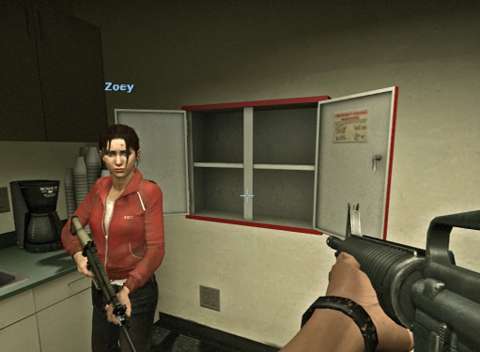
These syringes provide a bit of temporary health. However, their true worth comes in the form of their secondary benefits.
Firstly, they increase the survivor’s movement speed; it also makes them immune to the grappling effect of regular zombies (more on this later). Knee-deep bodies of water also do not slow a survivor down. The adrenaline rush also disables the limitation on shoves (more on shoves later).
Moreover, it increases the speed of the survivor’s animations, and also hastens the process of using first-aid kits, deploying special ammo (more on this later) and reviving downed survivors. Most importantly, It also ignores the adverse effects of low health.
Considering the immense of benefits of adrenaline rushes, it does not come without a price. Firstly, its effects ebbs away quickly; this is portrayed through a sudden deafening of the survivor and loss of visual detail in the screen. Therefore, the player must decide on what to do with the adrenaline rush beforehand, and do just that.
PILLS:
Painkiller pills return from the first Left 4 Dead. They still provide temporary healing, specifically a straight infusion of 50 points of temporary health. Their use has very short animations too, and they do not come with side effects; thus, this makes them arguably competitive against adrenaline syringes – at least when the player character still has some non-temporary health left.
HEALING ITEM SLOTS:
Interestingly, the survivors have space on their persons to carry healing items. Their backs are used to carry first-aid kits or defibrillators, whereas they hook syringes or pill bottles somewhere on their hips. (It is not entirely clear how they can secure these items on their persons, but believability has never been the focus of the Left 4 Dead franchise.)
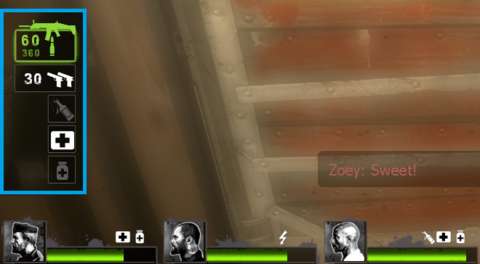
GUNS, IN GENERAL:
The survivors’ main advantage is their guns. Obviously, guns give the survivors a ranged solution for eliminating zombies.
However, there are many zombies and only so many bullets to fire. Yet, the survivors do indeed have many rounds to shoot; even the guns with the least ammo reserves, the shotguns, come with a hundred rounds. Barring reckless trigger-happiness, these reserves are usually enough to last until the next pile of ammo is found.
Interestingly, only the individual survivor knows how much ammo he/she has remaining; the others cannot see the amount he/she has left, not even the Special Infected in Versus mode. The survivors cannot share ammunition with each other either, even if they are using the same weapons; this is a major limitation which the game’s designers have never saw fit to address.
As for the guns which the player would use, they would be quite familiar to anyone who has played his/her share of modern military shooters.
GUN ARCHETYPES:
Even though the guns in Left 4 Dead 2 may be based on real ones, they do not follow their real-world counterparts closely. Rather, they can be loosely categorized into a few archetypes according to their efficacy in combat.
Firstly, there are the general-purpose guns, such as most of the assault rifles. Interestingly, they are not always available for use right from the start of any campaign. Rather, they are only found later.
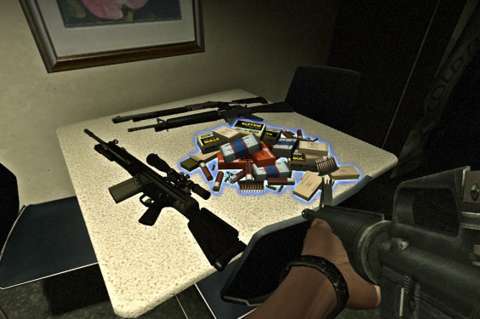
Secondly, there are the close-quarters guns, namely the shotguns, of which there are no less than four. When there are many zombies who threaten to simply overwhelm the survivors – and there can be many times when this happens – shotguns can clear a path, better than any other guns could in such situations.
Then, there are the submachineguns. They are sort of like the general-purpose guns, but do not have much in the way of stopping power. However, what they have is considerable accuracy, and doles of rounds to expend. For players who can land headshots without much difficulty, they are very efficient for this purpose. After all, headshots with just about any gun kill any kind of Infected immediately.
Next, there are the sniper rifles. Usually, these are not good choices for weapons; their ammo reserves are quite limited and their immense damage-per-shot is wasted-overkill on many targets. However, players who expect trouble from Special Infected and who happen to be good shots might consider taking these, especially in Versus mode where the Special Infected are obviously a lot more dangerous. For these targets, one shot from a sniper rifle is usually enough to take any of them down, with the exception of the Tank.
Finally, there are special weapons which just do not fit into any category, namely the M60 light machinegun and the grenade launcher. Incidentally, these guns cannot have their ammunition replenished at ammo stashes, which do not have compatible ammo for them.
Thus, they are not exactly the best guns to carry around in the long term, but if the player expects a tough stretch ahead, their great firepower is usually much appreciated. It so happens that they tend to appear in tough campaigns.
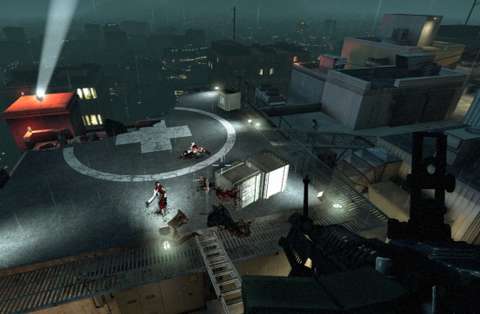
HANDGUNS:
Handguns fall into a category of their own, mainly because they do not have actual reserves of ammo at all. If they are equipped with handguns, the survivors will always have ammunition for them. The survivors can empty magazine after magazine, but still somehow have spares.
However, handguns have a lot of drawbacks. The default 9mm does not have a rate of fire which can keep up with onslaughts of regular Infected. The Magnum, while powerful, is barely reliable at hitting anything beyond several yards, and has a very small magazine. Handguns are indeed fall-back weapons, and should be treated as nothing more.
MELEE WEAPONS:
Melee weapons were introduced in Left 4 Dead 2 as a form of novelty, but they also happen to be quite effective and entertaining at what they do. For example, cutting down a swathe of zombies with another survivor at one’s side can be very fun.
However, they are implemented with some caveats. First and foremost, they take up the weapon slot which has been reserved for handguns, so the player has to give up his/her fallback weapon.
A hit from any melee weapon can kill regular zombies immediately, and sometimes a few of them if they are closely packed. However, each melee weapon is different from the rest in a few ways.
For example, the night-stick has a very fast attack animation, but it has a very small arc in its swing, and its reach is poor. In contrast, the Guitar has a wide arc and massive collision detection, but is comparatively slow. As another example, the Katana is the most all-round powerful melee weapon, but it is incredibly rare to find. It also has an outrageous visual design; it causes a lot of blood spurts.
There are other nuances, such as the fact that bladed weapons are the only ones which can reliably cut a Smoker’s tongue (more on the Smoker later).
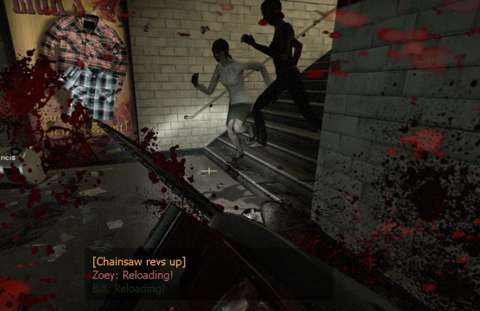
The use of most melee weapons is merely a matter of swinging them about and hitting things with them, but the chainsaw is an exception. It has a limited fuel reserve which cannot be replenished in any way. Eventually, it will run out of fuel and has to be abandoned.
Since the survivor does not swing it but rather just holds it out askance in front of himself/herself, it is not very good for cutting down regular zombies which are coming at him/her from multiple directions. Rather, the player has to look about and hope that the chainsaw hits zombies. The survivor can back himself/herself into a corner to minimize this problem, but he/she is better off using a more reliable weapon.
SPECIAL AMMO:
Left 4 Dead 2 introduces an entertaining but risky gameplay element of special ammo for guns.
A magazine – and only one – of special ammo can be loaded into any one gun. This magazine in turn comes from a box of ammo, which has to be lugged around in lieu of first-aid kits and defibrillators; this is the first way in which the aforementioned risk expresses itself.
Once a survivor has opened up a box of ammo, it is placed nearby for the survivors to peruse. Each survivor can only take one full magazine of special ammo for his/her currently equipped gun; the game prevents the survivor from taking any more after this. This magazine has to be completely expended in order to fully benefit the survivor.
Reloading the weapon does not replenish the special ammo; neither is the special ammo replaced. This is the caveat which the player must keep in mind, lest his/her survivor is caught switching back to regular ammo at the wrong moments.
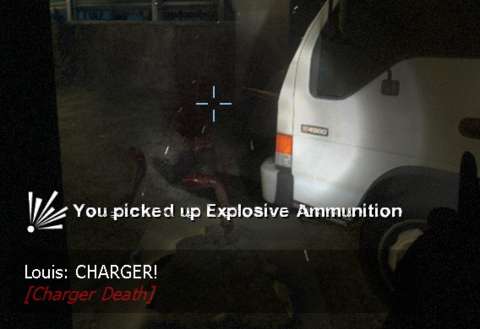
The first kind of special ammo is incendiary ammo. As its name suggests, it sets whatever it hits on fire; anything which is on fire obviously suffers damage over time. The regular zombies appear to be incapacitated by fire, flailing about a couple of seconds after being set on fire before dying.
The second kind of special ammo is more potent, as well as more problematic. Explosive ammo increases the damage of a weapon, but this is not its main ‘benefit’.
It practically turns any shot into an explosive shot. Rifle and handgun rounds turn into mini-grenades, capable of tearing any regular zombie and staggering any which is nearby, whereas shotgun shells can rip holes into crowds, even from afar.
Explosive ammo turns any gun into a devastating crowd control weapon, but also turns it next to useless for close-quarters combat, especially in the case of shotguns. This is because explosive ammo is dangerous against survivors too.
(Incidentally, explosive ammo has been officially banned from Versus mode several months after the launch of Left 4 Dead 2, apparently because it causes problems which lead to players not playing the game mode in ways which the developers intended.)
LASER SIGHTS:
Laser sights are weapon upgrades which can be applied to the survivor’s guns, if the survivors can find a stash of these somewhere. They are very rare, after all.
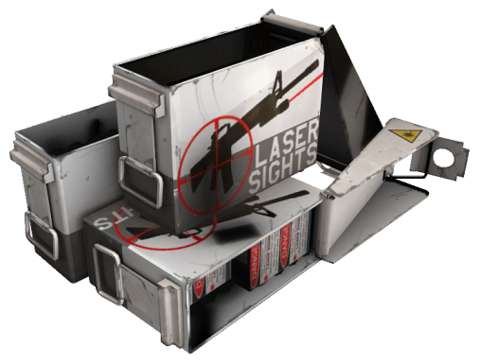
A gun with a laser sight obviously emits a laser beam, which lets human players figure out where the gun is aimed. In addition, it somehow improves the stability of the gun when it is firing, thus generally improving accuracy as well; this improvement is especially notable for submachineguns and the AK-47.
THROWING ITEMS:
In addition to guns and melee weapons, there are “ordnance” which the survivors can toss around. Many of these appear to be improvised weapons, but they all share one role in common: crowd-control.
Tossing them is not an easy matter though; veterans of Source physics would know that thrown objects only reliably follow expected trajectories if there are nothing in the way. However, the game’s designers are indeed aware of this, and they have implemented some nuances which observant players can learn and utilize.
MOLOTOV COCKTAIL:
By far, the most preferred throwing item among players is the Molotov cocktail, mainly because of its damage potential and its area-denial abilities. The fire-in-a-bottle can tossed onto an area to spread flames around, which will burn for around a minute.
Any zombie which come into proximity of the flames are set on fire and will burn to death; apparently, their disease makes them rather flammable.
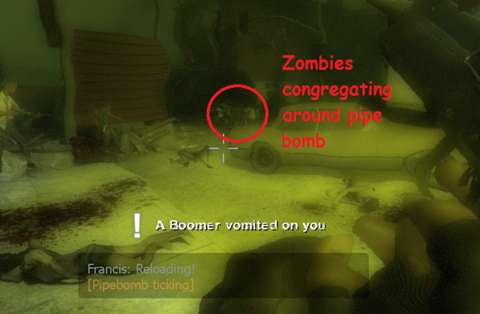
In the case of regular zombies, they are oblivious to the threat of the flames. They will run into them, set themselves on fire and then stagger about before collapsing. This makes the cocktail incredibly useful against incoming hordes.
Molotov cocktails are best thrown from higher ground. This is because the bottles can hit incoming zombies, causing fires to erupt too close to the survivors. This is a terrible mistake; accidents involving Molotov cocktails can ruin the entire party.
Thus, it may seem like a bad idea to use a Molotov cocktail indoors. However, there is a nuanced design which allows this. If the player can hit the ceiling over the area which the player wants to set alight, the flames will drop down from the ceiling and ignite the area anyway.
PIPE BOMB:
The pipe bomb is a grenade, which on its own would have been quite useless against the fast moving zombies in this game. However, it has also been fitted with a sound emitter that seems to particularly infuriate the Infected, thus attracting them over to it. Obviously, the resulting detonation would be outrageously gory, but the pipe bomb’s main benefit is that it can draw away hordes of regular zombies.
BOOMER BILE:
Perhaps to gratify speculation which was made in the previous game about the Boomer’s abilities, Left 4 Dead 2’s designers have decided to implement the Boomer Bile item, together with some backstory for it.
Some CEDA operatives have collected fluids from the Boomer; by far, it is the only Special Infected which is capable of directing the regular Infected around in a deliberate manner.
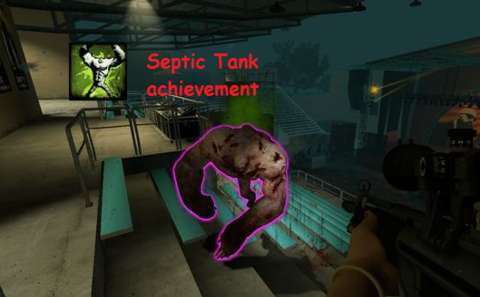
This fluid is kept in flasks which happen to be uncharacteristically fragile for something which is supposed to hold a bio-hazardous material. When thrown, they crack apart, releasing the fluids and soaking anything which is caught in them, including survivors if they are not careful.
After that happens, any regular zombie which is in the vicinity will charge towards whoever has been soaked and attack them; even regular zombies which have been soaked will attack each other, or just strike out randomly. Even if the bile did not soak anything, it leaves behind a vaporous cloud which will attract zombies anyway.
If there are not a lot of zombies around, the “Director” simply summons hordes of them. This is not unlike the effects of the Boomer’s own vomit, except that it can be applied on Infected too. This makes the Boomer Bile flask a bit risky to use, but it is useful if there are no Pipe Bombs to be had.
CARRIED ITEMS:
There are some other items which survivors can carry around, but they must use both their arms to do so, thus preventing the use of guns. The most which they could do is shove zombies back with them, but that is about it.
These other items tend to appear when Crescendo Events are about to happen; there will be more on Crescendo Events later. Anyway, these items are strewn about, waiting for the survivors to place them where they would be tactically useful.
There are oxygen canisters, which can be shot to cause them to go on a countdown; this countdown can be accelerated by shooting them further. Once the countdown is up, the canisters explode, killing any nearby regular zombies.
Compared to the other carried items though, oxygen canisters are not powerful, but they are a lot less risky to use due to their delayed detonation.
Propane tanks are a lot like oxygen canisters, but their explosions are more powerful and they immediately detonate when shot at.
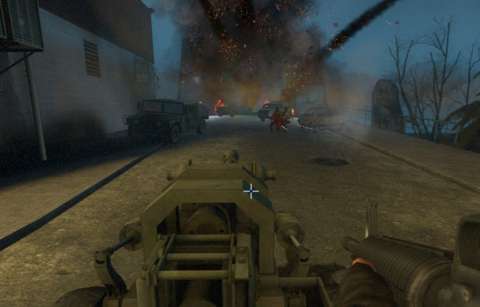
Gas cans are by far perhaps the most common carried item; they are easier to spot than the others due to their distinctive tomato-coloured models. The player can pick and place these where they can create fire zones to fry any incoming hordes, much like Molotov cocktails can. Of course, the caveat here is that they have to be shot at, and this is not easy if there are zombies which are obscuring it from being shot at.
Fireworks are items which are found only in one of the campaigns endemic to Left 4 Dead 2, and even then, only in its finale. These work a lot like gas cans, except that they are lot more brilliant to look at, and it can be amusing to know that the zombies are so flammable that even fireworks can ignite them.
It should be noted here that all of these items can damage each other, so the player might want to consider placing them such they do not create an undesirable chain reaction.
EXPLOSIVE BARRELS:
Despite being a staple in first-person shooters, explosive barrels do not appear much in the Left 4 Dead franchise. Rather, they appeared only in The Sacrifice campaign.
Like typical explosive barrels, these explode spectacularly when shot at. To compensate for their inability to be carried about, they have the combined effect of propane tanks and gas cans. They can be used for very effective area denial.
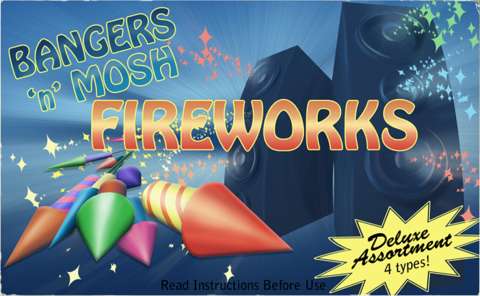
SLOWING EFFECT OF ZOMBIES & SHOVING THEM OFF:
Either the survivors are stronger than they look, or the Infected have a terrible sense of balance. Anyway, the Infected will, more often than not, swarm all over the survivors.
When a survivor is mobbed by regular zombies, they are slowed down to a crawl. In addition, seeming rubber-band physics cause zombies to stay “glued” to the survivor, perpetuating the slow-down. When this happens, the player must either kill them or, better yet, shove them away to make some room.
Shoving has an incredibly wide arc of effect; just about any zombie which is within view, partially or fully, of the player is pushed away. This also works against most Special Infected, with the exception of the Tank and the Charger.
Zombies which have been shoved stagger for a while, and they may even fall down, making them vulnerable to follow-up attacks.
This is obviously useful, and in early builds of the first game, players had indeed resorted to having a couple of survivors dedicating themselves to shoving while the other two shoot.
To prevent survivors from exploiting shoves in the sequel, shoves have short cool-downs, thus necessitating the shooting of shoved-away zombies lest they swarm the survivors anyway while their shoving ability is in cooldown. Adrenaline rushes ignore this limitation though.
Interestingly, for gameplay purposes, performing a shoving action does not interrupt any reloading action by much. The latter will be delayed just a bit, but the player can still reliably shove while attempting to reload.
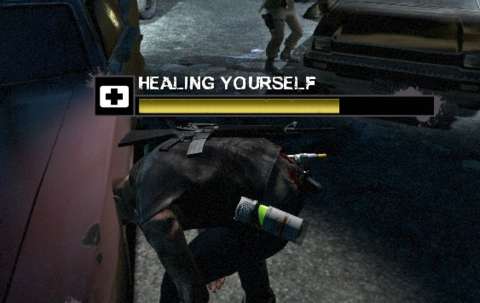
DOWNED:
A survivor who has lost all of his/her health collapses on the ground, unable to move and use anything other than handguns. In this state, they are considered to have been “downed”.
Downed survivors are not entirely vulnerable to being finished off though. They are given hundreds of points of temporary health; though these go down alarmingly fast, at “Normal” and “Easy” difficulty settings, they give the other survivors plenty of time to clear the area and revive the downed survivors. They lose valuable time, of course, for which the Director might just punish the survivors with more incoming zombies.
At “Advanced” and “Expert”, this temporary health goes down faster, and even faster if there are zombies attacking the downed survivors. (They are very much being beaten and kicked to death.)
Obviously, this is a second chance for the survivor and the others; they might be able to revive the downed survivor. If a downed survivor has lost all of his/her temporary health, he/she is killed, and can only be revived with a defibrillator.
Getting a survivor back up is not easy. One of the other survivors must get close to him/her and then spend time performing an animation to help him/her back up. Meanwhile, this survivor is vulnerable to attacks too. In fact, in Versus mode, Special Infected are more than likely to wait near downed survivors, just to ambush the others.
CPU-CONTROLLED COMPANIONS:
Not everyone likes to play with other people, so the game provides the player with the convenience of playing in single-player with survivors which are controlled by behaviour scripts.
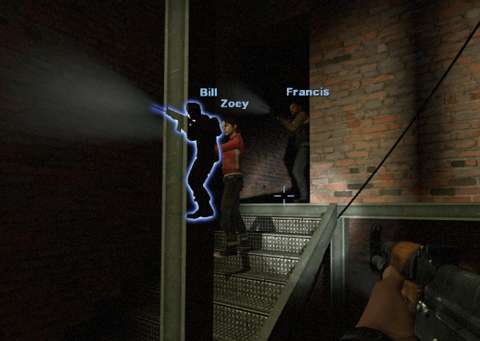
In the multiplayer modes, survivors (and Special Infected) which are not controlled by humans will be controlled by behaviour scripts which are running on the hosting server. This means that in the case of lag, these CPU-controlled characters might appear to warp around.
For the most part, the behaviour scripts for survivors are quite reliable, especially at shooting zombies.
However, they are designed to be followers and nothing more. The most which the player would see from them which borders on taking the initiative is that they will change guns, replenish their ammo and pick up and use healing items. They also try to avoid friendly fire whenever possible. This is perhaps just as well, as these are the essentials which survivors have to keep in mind.
However, they have many limitations. The most obvious is that they will not use throwing items and they will not pick up special ammo kits. The game designers were never able to implement scripts which make them smart at doing so. There are mods to include this in the behaviour scripts, but considering how finicky throwing items can be, using these mods is a risky endeavour.
Computer-controlled survivors do not appear to crouch very often, which is a major setback. Although they probably do not need to do so in order to be more accurate, they should be doing so in order to reduce their profile and thus let other survivors shoot over them; experienced human players certainly do.
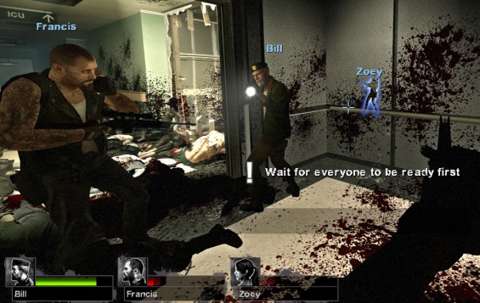
SAFEHOUSES:
In terms of narrative, safehouses are places, usually rooms, where other survivors have somehow converted into effectively barricaded zones.
Gameplay-wise, safehouses separate each campaign into stretches. With the exception of the finale and the beginning of the campaign, safehouses represent the start and end of each stretch, and are places where the survivors can take stock of their supplies.
As long as the survivors are cooped up inside a safehouse without unbarring the exit, they are quite safe. The Infected cannot get through, no matter how hard they try to claw through it. However, if the exit door has been unbarred, they are no longer invulnerable and can be brought down, especially by a Tank.
Safehouses usually have at least these: one ammo pile, a couple of spare guns and a few first-aid kits. These are the least that the Director will always place, and is usually enough for competent groups of survivors to scrape by with. There might be more if the fickle Director is generous, but that is a rarity.
Getting into the next safehouse is easier said than done of course. The survivors will have go through many places and many zombies. Even when the safehouse is in sight, they are certainly not out of the woods. Rather, the zombies are spawned into the level at more prodigious rates as the survivors approach the safehouse.
Moreover, the next safehouse has its entrance already wide-open. It is more than likely that it would be inhabited by the Infected, and in Versus mode, the Special Infected. (Strangely, the safehouse does not have to be cleared of zombies to be rendered safe. As long as the survivors are in it and its entrance is closed, the stretch will end.)
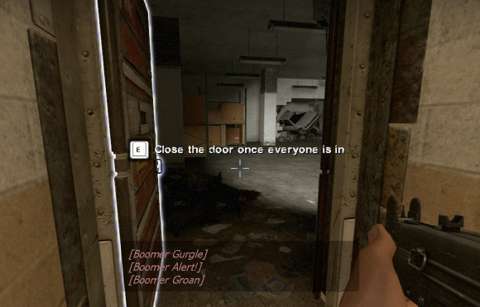
CRESCENDO EVENTS:
The game’s designers have made certain that some stretches between safehouses are more tense than the others. This is implemented via scenarios which require the Survivors to wait for a path to be cleared or otherwise made available. Meanwhile, the game swamps the Survivors with higher than average numbers of Infected.
These scenarios are called “crescendo events” by the game designers, and they are intended to test the survivors’ skill at defending an area from a deluge of Infected for a certain period of time.
The Infected are generally not given the opportunity to actively delay the progress of the event, unless the scenario has been designed to throw a spanner into the survivors’ plans.
For example, there is a crescendo event which requires survivors to wait for a platform to be raised/lowered for them to use. The Infected generally cannot attack the platform or its mechanisms in any way.
However, there are some crescendo events which do give the Infected these opportunities; these occur for the campaigns in Left 4 Dead 2. These events usually require the survivors to perform some fetch-and-carry busywork – while being hounded by Infected. Special Infected can attempt to incapacitate survivors which are carrying objective items, thus delaying their progress and giving them more time to try to chip down the survivors’ health.
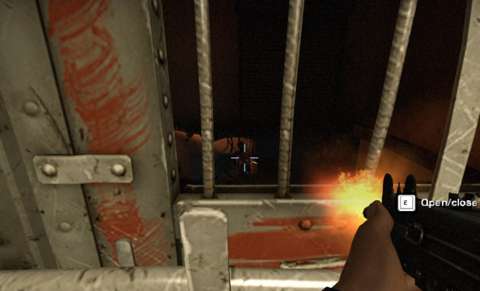
FINALES:
The end of every campaign is punctuated with a special event called the “finale”. This is like a crescendo event, except that it is a lot longer. Moreover, the Director sheds its limitations on the spawning of Infected; it can send horde after horde of regular Infected at the survivors and pepper Special Infected in among these.
Generally, finales are simply a matter of time for the survivors; they have to endure the Infected’s onslaught while waiting for rescue to come. In some others, the Survivors must engineer their own escape.
For example, some finales require the Survivors to collect gas cans so that they can fuel a generator or vehicle. For these finales, especially in Versus mode, the Infected can attempt to delay the survivor’s progress, such as by sabotaging the gas cans. (They cannot damage the object which is receiving the fuel though.)
To help the Survivors pull through a finale, the game places an ammo pile at a specific spot. The survivors can attempt to return to this pile to replenish ammo; in Versus mode, the Special Infected players will keep this in mind, however.
Usually, first-aid kits will also be close to the ammo pile, so the survivors can try to heal up before triggering the finale. On the other hand, it has to be said here that the time before the start of the finale is not a “down-time” at all; the Infected can still attack the survivors during this.
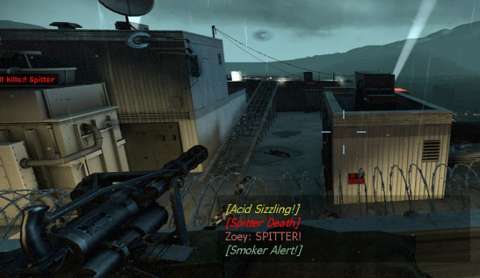
Finales tend to have the aforementioned carried items strewn about. Tactically-minded survivors will carry these to be planted at strategic locations before or even during finales. However, the Infected can still stymie these efforts by isolating and incapacitating the survivors.
HEAVY WEAPON EMPLACEMENT:
In just about every finale, there is a heavy weapon emplacement. In the first Left 4 Dead’s campaigns, this is a minigun stand. In Left 4 Dead 2’s, this is a heavy machinegun stand.
Both have the same purpose; they send a hail of lead towards whatever they are pointed at. This can cut down regular zombies rather easily, and can very quickly kill special infected. They also have unlimited ammo.
However, they have considerable drawbacks. The most obvious of these is that they are static. Any survivor which is operating a heavy weapon is quite vulnerable to the attacks of certain Special Infected, especially the Smoker and Spitter.
The second drawback is that they have limited arcs of fire. The gun can only be aimed at anything within the 170-degree arc in front of its stand. This is perhaps its most serious drawback, because more often than not, the zombies can approach the emplacement from its rear blind spot. The survivors can compensate by covering the rear of the operator of course.
The final drawback is that the gun will eventually overheat if fired for too long. While both the minigun and heavy machinegun have generously long durations before they overheat, when they do overheat, they become useless for uncomfortably long times.
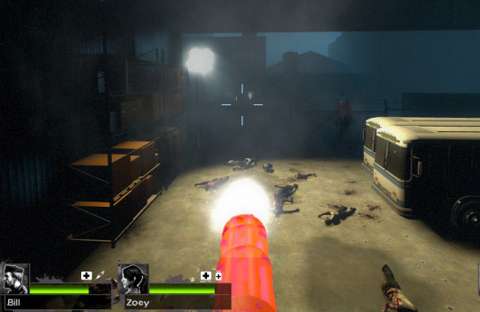
Interestingly, the minigun has a longer firing duration before it overheats and it appears easier to cool. This is perhaps to balance it against the heavy machinegun, which does not to be wound up like the minigun.
ESCAPE - THE FINALE:
The survivors’ goal in the finale is to wait for rescue to come or to prepare a means of escape, and then get into or onto whatever is facilitating that rescue. This is usually a vehicle, such as a helicopter coming in to pick up the survivors, or a vehicle which the survivors need to fill with fuel.
To do this, the survivors must get to said vehicle and stay in or on it. The vehicle will not leave until all capable survivors are on it. If there are survivors which have been downed and they have yet to get in or on this vehicle while the other survivors had, then the vehicle will leave without them. They are very much doomed, as the “credits” roll for the campaign/episode would show.
Presentation-wise, the finale is usually a fittingly thematic and dramatic end to the campaign, especially in the case of the finales of Left 4 Dead 2’s original campaigns. The finale of the Dark Carnival is a particularly good example; the campaign is a tribute to rock, so its finale is, appropriately enough, a concert – specifically one where the survivors rig the concert’s stage as a defensive position and as a beacon of sorts to rescuers.
Indeed, some of the finales can be particularly memorable, especially those for the campaigns which are part of free DLC for the game.
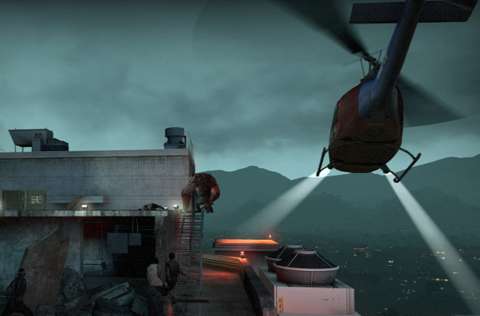
THE INFECTED - IN GENERAL:
The Infected are there to make life a living hell for any survivors. They are not the hungry sort of zombies, but rather the feral and rage-filled ones seen in 24 Hours Later and its sequels. Therefore, the player can expect zombies who just barrel down streets and corridors after the survivors, heedless of their own survival.
These zombies alone would not have been much of a problem, even if they are in hordes. Proper crowd control can eliminate them quite efficiently.
However, the plague, perhaps as a semi-sentient response of sorts to the survivors’ attempts at defending themselves against the dim-witted regular infected, has also created particularly nasty specimens.
The so-called “Special Infected” are these creatures. In terms of narrative, they have volition which is independent of those of regular infected. They have capabilities which can complicate the survivors’ attempts at obtaining rescue or escaping, as will be described later.
REGULAR INFECTED:
Regular infected are the most numerous enemies which the survivors encounter. They are usually already spawned into the level, often moping or lying around in dark places, or just wandering about in the open. (A few might also be found fighting with each other.)
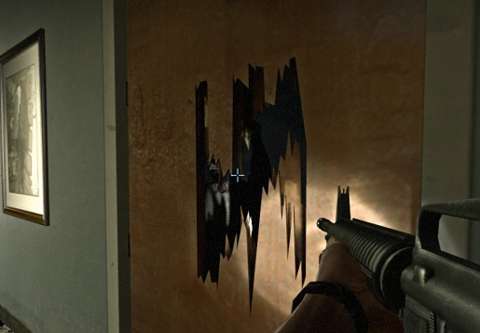
Once they are aware of the presence of survivors though, they will get up and go after them, almost relentlessly. A quick player might be able to kill them before they can become fully alert.
To reduce system overhead, the game will de-spawn regular zombies which the survivors have left far behind, regardless of whether they are aware of their presence or not.
As mentioned or implied earlier, the regular zombies are not very bright. However, they compensate by having great numbers, and through a gameplay element which also emphasizes their great numbers as if it is not clear enough already.
INCOMING HORDES:
The game can occasionally inject a swath of regular zombies into the level, all of which are well aware of the survivors’ presence.
There are events which, with certainty, cause the appearance of hordes. The first of these are crescendo events, which always begin with hordes being summoned in (and periodically afterwards). The second of these are any major noise disturbances, such as car alarms going off or other particularly loud noises. The third cause is Boomer bile or vomit soaking hapless victims.
The “Director” may also summon in hordes, depending on its whims. This tends to happen if the survivors appear to be doing well, e.g. they have a lot of non-temporary health and ammo left, or if they have been lingering in a place for too long.
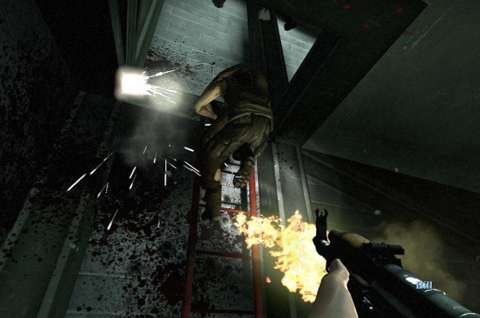
UNCOMMON INFECTED:
In order to emphasize the settings of the locale(s) for a campaign, Left 4 Dead 2 introduces some regular zombies which are a bit different from the rest; the Left 4 Dead campaign has also been remade with this in mind. These so-called “uncommon” Infected often have capabilities which make them different from the others, for better or worse, depending on the perspective of the survivors.
For example, the uncommon infected known as the “Fallen Survivor” appears in The Passing campaign, which was added after launch as free DLC for the Steam version of the game. The Fallen Survivor actually tries to run away from the survivors instead of chasing after them (unless the survivors are soaked in Boomer bile). However, running him down is an incentive, because he is often carrying supplies on his person.
In a contrasting example, the Swamp Fever campaign has the “Mud People”, which are nothing but trouble. Preferring to skulk around on all four limbs, they have a lower profile and when they hit an actively-controlled survivor, they splatter mud decals onto the player’s screen.
The first game’s campaigns which have been remade in the sequel also have uncommon infected included as additional content. For example, the No Mercy campaign has been remade with infected CEDA workers, which can appear in the hospital stretch.
SPECIAL INFECTED:
Some of the Infected have mutated into something else entirely. They make their presence known very early on. More often than not, the inexperienced player will have to learn about them the hard way; the game will only inform the player of what they can do to survivors when they are already doing it.
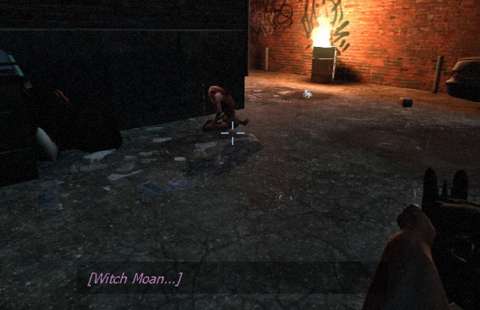
Consequently, the player might want to consider playing the other game modes first before playing Versus mode, if the player wants to avoid embarrassment.
There are several kinds of Special Infected; the survivors will encounter them in random mixes, though two of them are rarer than the rest.
THE HUNTER:
The Hunter is perhaps the most mobile of the Special Infected, and also the least conspicuous. Its hoodie gives its away (it is the only character in the series to wear a hoodie), but when it is running around on two legs, its animations are very similar to those of regular zombies.
Once it crouches though, its capabilities change drastically. It can pounce from this stance, and again almost after landing. Skilled players, and even the built-in behaviour scripts, can exploit this by having the Hunter pounce repeatedly, even to get away. It looks and sounds silly doing so (especially considering that it howls with every pounce), but it is effective (and not deemed imbalanced by the game’s designers).
If the Hunter’s pounce connects, the survivor is pinned down while the Hunter mauls and bites at him/her. There are two ways to remove the Hunter: kill it, or shove it away.
Interestingly, a Hunter which has been set on fire does a lot more damage when it has pounced on a survivor than when it is not on fire. Considering that the other Infected do not appear to exhibit such capabilities, this may be a vestigial bug that the developers left in place in order to make the Hunter’s gameplay designs more interesting, i.e. giving the Hunter a risk-versus-reward option. Of course, this is balanced by the fact that the Hunter will die from the flames, if it is not gunned down first.
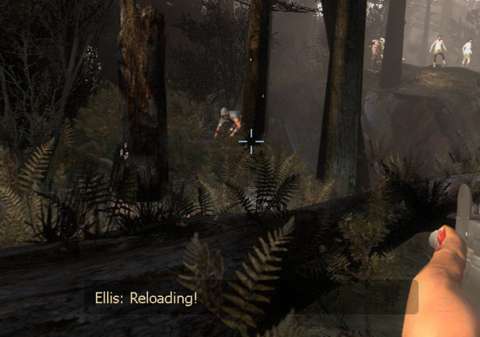
THE BOOMER:
The Boomer is, of course, the “poster boy” of sorts for the Left 4 Dead series.
Anyway, the Boomer is a bloated creature with a massive model and rather low hitpoint count when compared to other Infected. In other words, it is one of the easiest Special Infected to shoot at. This is just as well, because if the Boomer gets close enough to utilize its capabilities, the survivors are very much in trouble.
The Boomer can vomit onto survivors, which summon regular zombies over to mob the survivors which have been vomited on. The Boomer has to make the vomit count; “recharging” the vomit attack takes quite a long while, during which the Boomer is a lot less effective.
If the Boomer can get close to the survivors and get itself killed, its explosive death would not only knock down survivors, it also coats them in bile, which leads to the same effect as them being vomited on.
Obviously, the Boomer can only make itself useful by getting as close as it can to the survivors. This is easier said than done, but in Versus mode, players have become quite creative in doing so, such as having the Boomer drop from high places and onto the survivors.
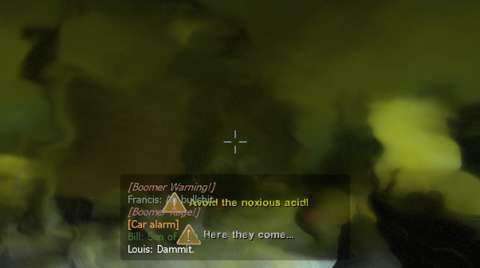
THE SMOKER:
The Smoker, as its name suggests is a smoke-wreathed creature. It is not clear how its body can create what appears to be smoke, but that is beside the point. However, the smoke does make the Smoker stand out, which is of course to its detriment.
Yet, this is a needed balance, because the Smoker’s main ability is to snare a survivor with its tongue from a long range – so long that players need accurate weapons if it snared someone from maximum range. Snared survivors are considered to be incapacitated, and will be drawn in closer to the Smoker (and likely away from the other survivors).
If the survivor is dragged up to the Smoker, the Smoker will immediately begin pummelling the survivor, adding painful insult to injury already being caused by the strangling.
In Versus mode, players have to keep in mind that the Smoker has to commit to a snaring; the player which has snared a survivor cannot choose to release the survivor. In other words, the player cannot use the Smoker’s tongue to simply scatter the survivors; the Smoker stays where it is when attempting to reel in a survivor.
If a Smoker cannot reel in a survivor due to an obstacle which is preventing this from happening, the game will stop the retraction of its tongue and immediately begin applying suffocation damage on the survivor.
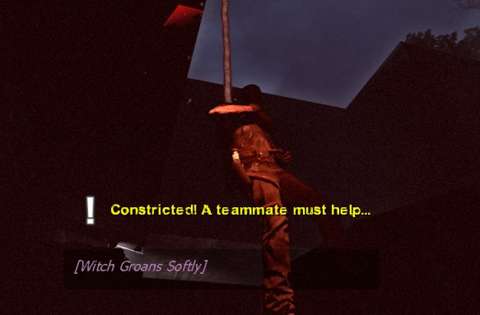
THE CHARGER:
The Charger is one of the three Special Infected which have been introduced in Left 4 Dead 2, mainly to address complaints about the gaps in the capabilities of the Special Infected.
The Charger is a bruiser, first and foremost. It is very difficult to stagger, and it takes more damage than the other playable Special Infected, discounting the Tank. However, it also has a large silhouette; it can attempt to run up to survivors and punch them with its massive arm, but it is likely to get gunned down first.
Its namesake ability though is the one which it will use in order to be more effective. When its ability meter is full, the Charger can go on a charge of incredible speed and distance, one which it will announce loudly. The first survivor which it bumps into is snatched and carried along on its merry way, until the Charger is stopped by an obstacle which it cannot bowl through.
However, if the Charger wasted a charge and crashes into an obstacle, it is temporarily dazed and will be vulnerable for a short while – not to mention that it is an embarrassing mishap.
If the Charger caught someone though, it will smash the survivor repeatedly after the end of the charge, either onto the ground or a wall. There is a nuance here: if the Charger ended the charge by hitting a wall-like obstacle, it smashes the survivor into it, inflicting an initial hit which is more damaging.
It will not take long for a Charger to deplete a Survivor’s health this way, but the Charger is a lot more exposed to retaliation than the other Special Infected which can incapacitate survivors. As a benefit though, the Charger cannot be shoved away.
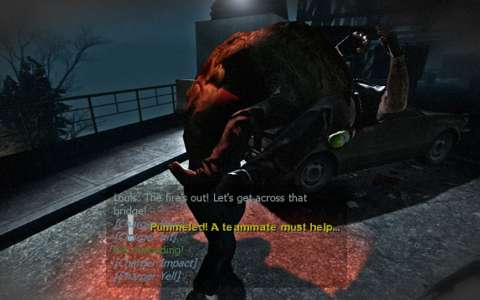
THE SPITTER:
The Spitter is the second Special Infected introduced in the sequel, specifically to fill the gap of a Special Infected which specializes in area denial.
The Spitter, as its name suggests, spits acid; this is its main way of dealing with the survivors. It can launch a glob of acid which can cover a large area in puddles of goo, with the centre of this area being the spot where the glob landed.
The puddles damage survivors like they are flames, albeit they do not block sight as much and they do not appear to damage the infected at all. This combination of properties is a strong disincentive for survivors to avoid being in the affected area. (Incidentally, attempting to bunny-hop across the acid puddles does nothing.)
This is quite devastating if the Spitter managed to hit an important place, such as the inside of safehouses or paths which the survivors must move through.
There is a drawback to this powerful ability though; it has a very long cool-down time and after spitting a glob of acid, the Spitter slows down considerably. The glob of goo can also be a bit difficult to direct, since it follows a projectile arc with a subtle height degradation.
The Spitter also happens to be a bit easy to spot; its slack maw constantly drips acid, which also happens to have a striking hue of green and which is also a bit luminescent. There will be many times when a survivor is able to gun down a Spitter from after because he/she spotted the green glow of the acid; this is something to keep in mind when playing the Spitter in Versus mode.
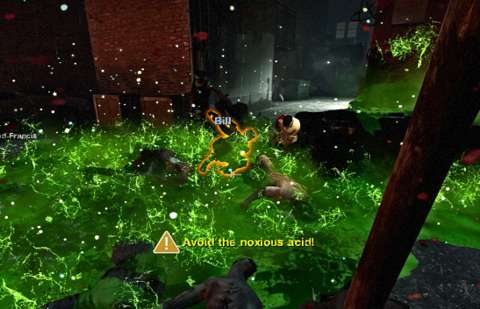
THE JOCKEY:
The Jockey is the smallest Special Infected and thus it is the most difficult to spot. However, this advantage is balanced by its manic personality; it makes a lot more noise than the other Special Infected. It is also quite weak.
This is just as well, because the Jockey has an ability which is rather embarrassing and debilitating to the survivors; the Jockey can pounce on a survivor, though not without the range and ferocity of the Hunter.
If its pounce connects, it latches onto the survivor and it will inflict damage over time, though this is too miniscule to be significant. What is more significant though is that the Jockey can take over the directional movement controls of the survivor and attempt to steer him/her away from the others and, if possible, into danger, such as ledges and acid puddles.
The survivor can attempt to resist the steering by making movement inputs against the Jockey’s steering inputs, so the survivor’s movement is not completely hijacked.
THE TANK:
The last but far from least Special Infected which is playable in Versus mode is the Tank. As its name suggests, it is a brute, and an alarmingly fast one too.
It has a massive profile which makes it easy to shoot at. It also causes the screen to shake the closer it gets, and there is music which outright gives its presence away. However, it compensates by having a large amount of health and immunity to being staggered by most things except direct hits from grenade launchers (and even then it is just momentary).
The Tank attacks in one of two ways: it either runs up to survivors and punch them, or it yanks a piece of concrete from somewhere and tosses this at the survivors.
Both sound as painful as they sound simple. A punch can fling a survivor away, possibly into even worse situations. As for the concrete projectile, it can immediately knock down a survivor if it scores a direct hit.
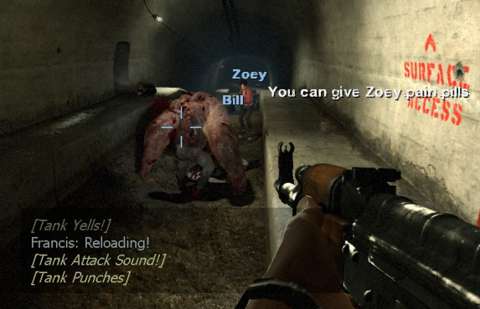
The Tank is the only Special Infected which can move cars around. It can run through them, pushing them aside with its unbelievable bulk. Alternatively, the Tank can punch them in order to fling them around. Both human players in Versus mode and computer-controlled Tanks will make use of this nuance. Cars which have been hurled around with punches are as dangerous as the Tank’s thrown rocks.
The Tank is meant to absorb a lot of punishment, but there are a couple of means to bring it down a little quicker. Firstly, setting a Tank on fire is a very good way to inflict damage on it. Secondly, if a Tank makes a mistake of running down a path which is overlooked by a heavy weapon emplacement in a finale, it will probably be hosed with lead.
It has to be noted here that CPU-controlled survivors do not appear to be able to recognize the dying throes of the monster; they will waste a bit of ammunition to shoot it when it is already no longer a threat.
THE WITCH:
The final Special Infected is unplayable. This is just as well, because it is one of the nastiest.
The presence of a Witch is mainly heard, not seen; this is because it has a smaller model than other Infected. It will wail, sob and cry, for whatever reason other than it is obviously a very wretched thing. Appearances are deceiving though – a closer look shows the hideous mutations the plague has inflicted on it, as well as the subtle red illumination emanating from the Witch.
It so happens that getting a closer look happens to anger the Witch, however. It will begin to snarl and growl, becoming angrier by the moment. Eventually, it will get up and chase after whoever angered it, or in the case of multiple survivors who angered it, whoever angered it the most.
Shooting at the Witch immediately angers it, of course. However, properly equipped survivors, such as those with the Combat Shotgun, might be able to kill it before it even gets up, but as mentioned already, the Witch is often not worth the trouble.
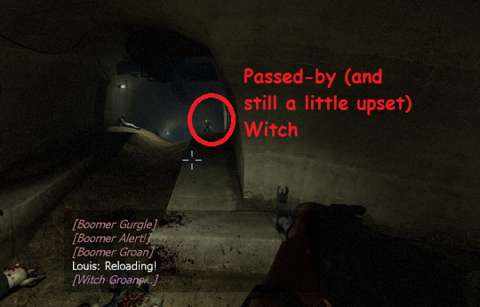
Once it is up, the Witch is very difficult to shake off. It runs a lot faster than other Infected and automatically shoves anyone in its path away, survivor or Infected. A swipe from its claws immediately takes a survivor down on “Normal” difficulty; in Realism mode, it generally kills anyone outright.
Interestingly, what the Witch does after killing a survivor is rather unpredictable. It might have an anxiety attack and runs off, away from the other Survivors, or it might continue going after the other survivors; the latter can cause a ‘party wipe’ if the other survivors could not gun it down quickly.
LEVEL DESIGNS & VARIATIONS:
One of the most interesting aspects of the Left 4 Dead series is how every attempt at any level feels a bit different from the last attempt at the same level.
This is due to elements within a level which can be tweaked by the ‘Director’ on a whim. For example, in the first stretch of The Parish, there are alleys which may be closed off by wire-fencing and concrete blocks in one attempt at the level, or they may be open in another. Closed alleys block the survivors, whereas the Infected can just climb over them (though it takes time for them to scale the barricade).
Therefore, this session-by-session variations do matter, though they do not radically change the pacing of the level.
Generally, the levels in Left 4 Dead 2 can be described as mixtures of semi-open spaces, corridors both long and short, and sometimes circuitous places. The levels have been designed such that the Special Infected always have a chance of trying to flank the survivors, in order to balance the fact that they would not last long under gunfire and that they make a lot of noise as they move about.
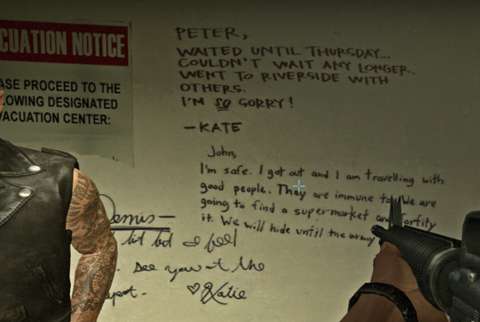
Usually, it is not in the survivors’ interest to tarry around and check every nook and cranny in the level; these nooks and crannies are likely to be poorly lit too. Experienced players might be more efficient at doing so, but even they know that one second longer is one second for the fickle ‘Director’ to consider putting more pressure on the survivors.
Knowledge of Source engine physics will be handy in this game, such as jump-crouching to get onto a slightly higher platform which cannot be otherwise reached with regular jumping.
“HANG IN THERE, BUDDY!”:
Some levels have falling hazards which can kill survivors if they fall. If a survivor is hurled off a locale with a fall hazard, such as from being hit by a Tank’s punch, he/she is very much doomed.
However, if a survivor has merely been pushed off such a locale and his/her model appears to have come into contact with a ledge or edge, he/she manages to grab the ledge. The game will keep its own count of the survivor’s non-temporary health, but to other players, the survivor’s health is replaced with a meter of temporary health, not unlike how the same happens when a survivor is downed.
Regardless, the survivor is considered as incapacitated, and must be helped up by other survivors, who will have to stand uncomfortably close to the ledge. The Infected can continue to attack the survivor who is hanging for dear life though, and if he/she loses all temporary, he/she falls. Being attacked also reduces the survivor’s actual health, which will reappear on display after he/she is helped up.
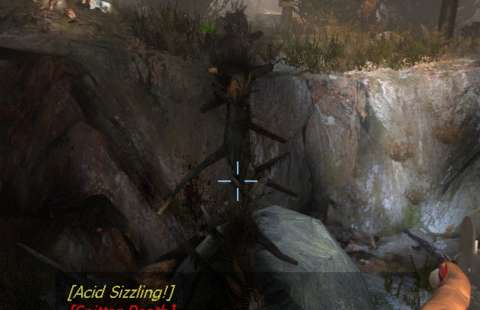
VERSUS MODE:
The Left 4 Dead series is mainly about players playing cooperatively as the survivors, but there is a game mode which allows players to play as the Special Infected, in an attempt to kill off as any survivors as they can. These players must keep in mind the capabilities of the playable Special Infected.
Two teams of players will alternatingly play as either the survivors or the Special Infected. Points are given for the purpose of score-keeping, and points are only awarded to the team which is currently playing the survivors. For this team, as many of them must survive as they can possibly manage.
This is perhaps the most intense game mode in Left 4 Dead 2. Even though the Special Infected may have the advantage of numbers, they have to be careful on how to set up ambushes so that they can get close enough. Yet, every second lurking is one second not spent on pressuring the survivors or otherwise preventing them from getting closer to the next safehouse.
Interestingly, the game does track the damage which the Special Infected have inflicted, directly or indirectly, on the survivors. This is mainly for knowing who has been doing their share of the work.
In Versus mode, the Special Infected cannot spawn close to a safehouse, either the one at the start of a stretch or the one at the end of the stretch. However, they can spawn elsewhere and attempt to lurk in the safehouse, though this is at best a last ditch effort.
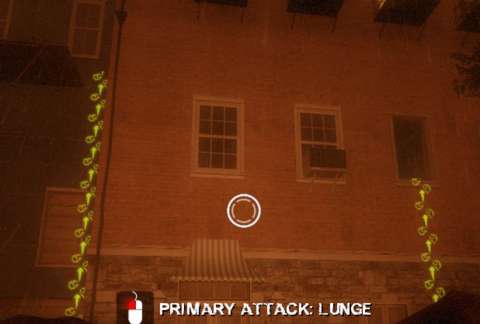
Players who are more experienced with the levels being played may have an advantage over players who do not. The ‘Director’ does its best to try to give either team a chance, but it is not enough to prevent steam-rolling.
In Versus mode, the Special Infected player who has done the most damage on the Survivors, either directly or indirectly, is soon given the privilege of controlling the Tank when the Director decides to introduce it.
To prevent a conservative player from using the Tank for hit-and-run attacks or having it lurk in tactical locations, there is a requirement for the Tank to keep the survivors in sight. If the survivors are not in sight for too long, the player loses control over the Tank, which reverts to control by the computer.
Therefore, the player has to be particularly skilled at balancing the need to go on an all-out attack against the need to apply pressure on the survivors as long as possible with the threat of the Tank.
REALISM MODIFIER:
To satisfy complaints that the game is not believable in its portrayal of the survivors, there is an official modifier to make them a lot less resilient, though not necessarily more believable.
“Realism” is a modifier which is placed on regular campaign runs and Versus sessions. Firstly, “Realism” disables a lot of visual indicators, such as those which let the survivors see each other even through walls. Rather, these visual indicators only appear when the survivors are very close.
Regular Infected become a lot tougher in “Realism”, for whatever reason. Headshots remain lethal to them, however, so survivors who are good shots are not too much at a disadvantage. In multiplayer sessions, “Realism” also disables the speech bubbles which appear over survivors’ heads.
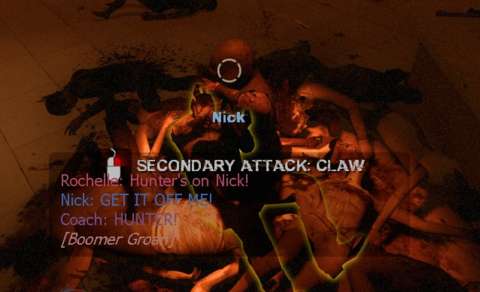
SCAVENGE:
“Scavenge” is a variant of Versus mode. It is primarily based on the finales which have the survivors collecting gas cans to fuel something. The teams are scored according to the number of gas cans which they have successfully used. Overall, it is strictly a game mode for those who are enamoured with such finales.
SURVIVAL:
“Survival” is an extension of the crescendo events and the hold-out finales. “Survival” maps are practically recycled from the latter two, but with a lot of obstacles and choke-points removed so that the Infected are not stymied by them. In return, the Survivors start out with significant but ultimately limited supplies.
In this purely cooperative game mode, the survivors must hold out for as long as they can. The waves of Infected only gets worse over time; rarely though, the “Director” might just start with dense waves, or even toss in Tanks.
MUTATIONS:
“Mutations” are practically official mods for the aforementioned game modes; they are certainly more stable than most third-party ones. However, they do not exactly make for balanced games.
For example, there is “Bleed Out”, which gives only temporary health to survivors in what would otherwise have been regular campaign runs. Obviously, this makes for an anxiety-inducing experience.
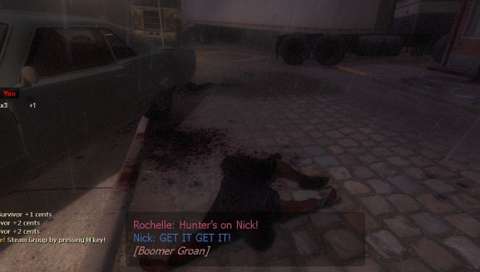
Before the end of July 2012, Mutations is a game mode which is controlled by the developer; every week before that, the game downloaded a patch to rotate in the next Mutation which had been selected in a poll in the week before. After that date, all Mutations were made available for playing.
This means that no more Mutations would be added to the game; indeed, there is hardly any more content to the game after that date. Still, it is hard to argue that the considerable amount of stable modifications to the game modes was not of significant value.
DIRECTOR:
The ‘Director’ has been mentioned many times already in this review. It is actually a set of scripts for the procedural generation of the next stretch of the level, as well as checks which decide when to put more pressure on the survivors or to ease up.
To elaborate, the ‘Director’ will consider the state of the survivors and their performance so far when generating the next stretch of a campaign. If they had been having it too easy, there are fewer supplies to be found in nooks and crannies. If they are doing poorly, there may be more first-aid kits lying around.
The Director also controls the population of the Infected. It can spawn Infected into dark, out-of-the-way rooms, or just call in a horde of angry zombies which charge at the survivors. Sometimes, they can pour out of seeming dead-ends.
There are many restrictions which are placed on the Director in order to make it seem less fickle. The most significant of these are provided by the difficulty settings. For example, the Easy setting limits the spawning of Tanks to generally only in the finales.
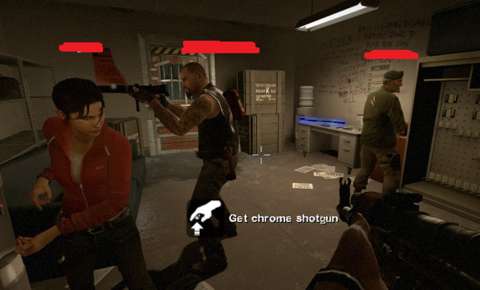
CHARACTER DESIGNS:
One of the most amusing aspects of the game is the colourful characters, especially the survivors. Ellis, Coach and Rochelle, in particular, appear to be quite excited about killing zombies, especially if they are compared with Nick and the four survivors from the previous game (though one can argue that they are going off the deep end). Ellis and Coach are especially expressive, as can be seen and heard in the Dark Carnival’s finale.
People who have missed the first game get to know the original four survivors too. Francis is still the bad-ass doofus, Bill is still a disgruntled war veteran, Louis is still trying to stay sane and Zoey is still Zoey.
The Infected have also been given attention by the designers too. The Uncommon Infected, in particular, contribute to the setting of each campaign. The original Special Infected have been given a make-over, which made them look even more hideous and wretched. This is just as well, because they can match the hideousness of the additional Special Infected too.
VISUAL DESIGNS:
The game makes use of updated versions of the Source engine, which had been around since Half-Life 2. Back in 2009, though perhaps not nowadays, it had aged quite well. Other than some awkward occurrences such as corpses being launched sky-high due to glitches in the Source engine, most of what is happening in the game looks believable (as believable as a fictitious zombie/plague apocalypse can be).
All of the survivors have the same hitboxes, so noticeably large characters like Francis and Coach are not at a disadvantage when it comes to avoiding friendly fire. However, the same cannot be said about how much space their models obscure, if another player is trying to look past them.
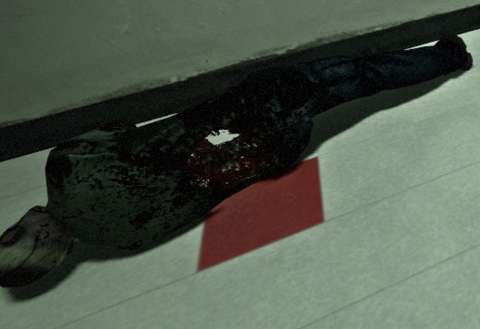
As mentioned/implied earlier, one of the survivors’ goals is to get to the next safehouse. The game will not provide the player with obvious directions which point them to safehouses. Instead, light sources are placed along the path which the survivors need to take. Other than these, there are graffiti signs which point the way to safehouses; these are more obvious. In addition, the survivors will also voice out where to go.
Every melee weapon in the game has its own visual effect when it is used on regular zombies; this is something which the game will mention in its developer commentary. This is mainly for gratuitousness, though the visual effects can get rather outrageous if there are a lot of zombies to be cut down.
For example, when a player who is playing a survivor kills zombies with bladed weapons, blood splatters appear across the player’s screen. This can become exaggerated, especially if the player is using the Katana, which is notorious for having wide arcs and particularly gory results.
As for the places which the survivors would go through, the onset of the collapse of civilization is quite clear in them. Many places are burning, rooms tend to be messy and there are a lot of corpses around (not counting those which the survivors would create).
It can seem unbelievable that such decimation can occur within the span of a couple of weeks, but seeing an onslaught of the angry infected clambering over obstacles rather easily might just change one’s mind about this work of fiction.
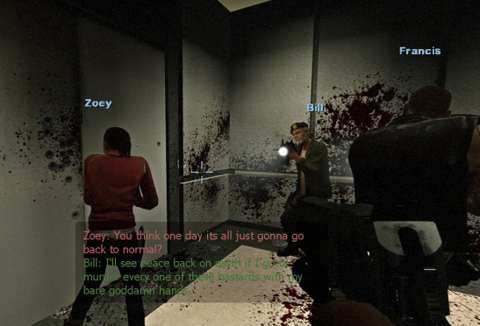
SOUND DESIGNS:
The first sounds which the new player would listen to in Left 4 Dead 2 is its music. Much of the music sounds like they had been adapted from the music in the first Left 4 Dead. If so, its electronic element appears to be a lot more prominent this time around. String instruments, especially guitars, are rather prominent, likely so as to emphasize the New Orleans setting.
Unsettling noises signal the coming of a zombie horde, followed by musical staccato to emphasize that the survivors are very much in hot water.
The Special Infected give their presence away with strange noises and utterances. For example, they will always utter something when they catch sight of survivors; this also happens in Versus mode. There are also some musical flourishes which can be heard when they are close by. In the case of the Tank, there is practically a track which is reserved for it. If these are not enough, the survivors will mention that they can hear the Special Infected if they are lurking nearby.
SOUND CAPTIONS:
Following an odd tradition which has been started by Half-Life 2 and how it made use of the Source engine, the player can turn on the option of “sound captions”, which have text lines appearing whenever the player can hear a clear noise. Fortunately, this feature glitches out if there are many noises occurring at once; otherwise, the player’s screen would be inundated with text.
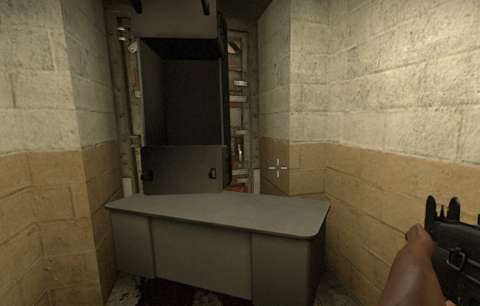
DEVELOPER COMMENTARY:
Some time after the launch of the game, one of the campaigns in Left 4 Dead 2, the Parish, has been used to include a post-mortem of sorts from the developers. In this game mode, speech bubbles appear as interactive objects which the player can activate to execute scripted events. These events describe how the developers overcome problems which they face and the innovations which they implemented during development to make the game more efficient, among other good designs.
COMIC:
For better or worse, some of the character development for the survivors does not exactly take place in the game itself. Rather, they occur in a freely viewable and downloadable comic which Valve has made available. Thus far, “The Sacrifice” is the only comic released, showcasing the past of the four original survivors. It also details the backstory of the plague, specifically how virulent it is.
Perhaps the game could have implemented the story in the comic within itself, but the comic is free after all – which cannot be said about other game-associated comics like those for Ratchet & Clank and Gears of War.
CONCLUSION:
Anyone who has played Left 4 Dead 2 would find it hard to dislike the game. It skilfully implements designs for cooperative gameplay, and it does have arguably good balance for its regular gameplay modes. Much of the revival of the zombie apocalypse genre can be credited to - or blamed on – the game.
Of course, the game is not without flaws. It can be argued that many of Left 4 Dead 2’s gameplay designs are hardly believable, e.g. the survivors’ incredible toughness and the inability of the Infected to attack objects which are important to the survivors. This was done in favour of gameplay convenience and balance of course, but one wonders whether both could have been achieved in some other ways.
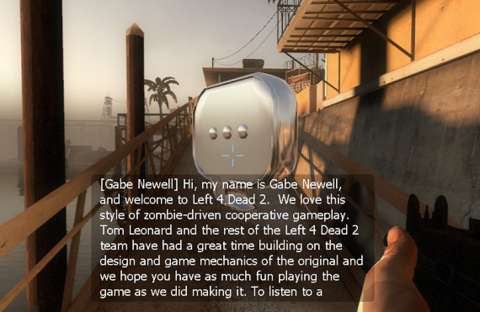
There is the complaint about how Left 4 Dead 2 affected its predecessor. With its inclusion of the first Left 4 Dead’s campaigns, the value of the previous game has been reduced as a consequence. However, for anyone else who waited for the second game – like this reviewer – Left 4 Dead 2 is practically both games packaged into one.
Although the addition of new content for Left 4 Dead 2 has ceased since 2013 or perhaps even earlier depending on one’s point of view, the game still benefits from continued technical support. This is evident from updates which provide fixes to issues like occasional problems with servers which are running Left 4 Dead 2 sessions.
It has been a long time since the release of the game in late 2009. It is likely that no more value can be expected out of Left 4 Dead 2 and perhaps even the series itself. However, this is no reason to baulk for anyone who had purchased the license for this game years ago; for what it and its developers have done up to now, the purchase is very, very far from being a poor decision.
